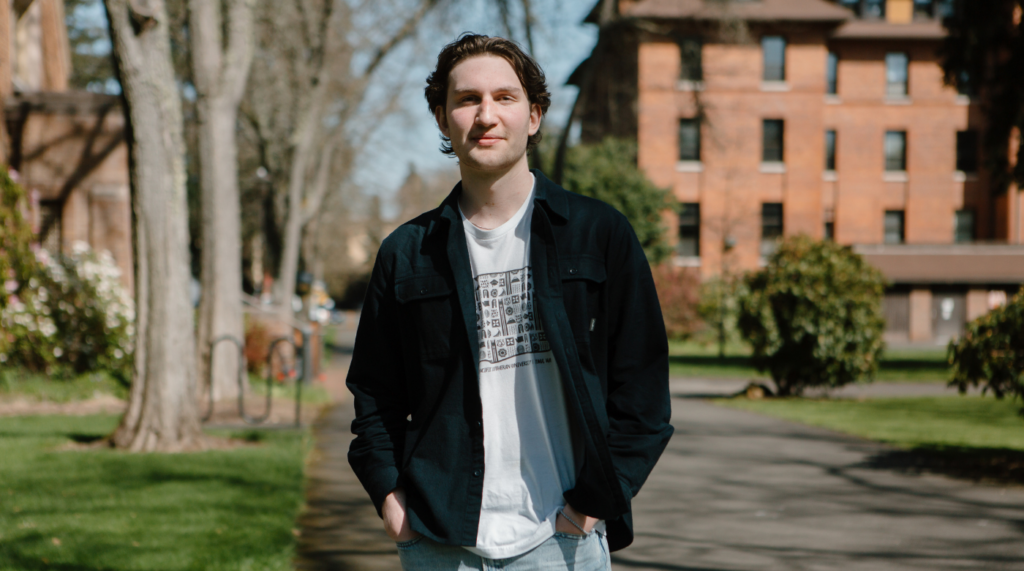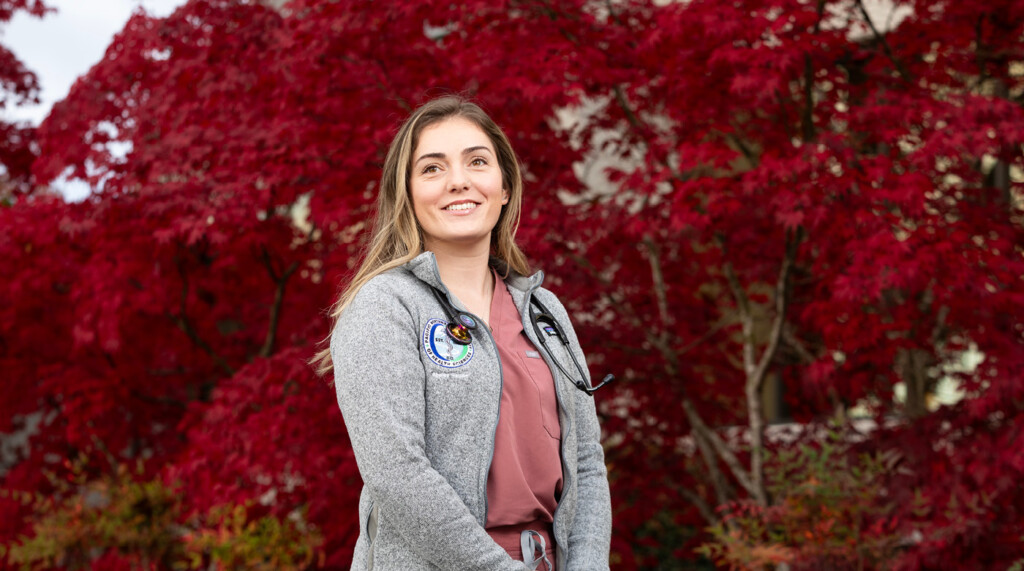Page 64 • (771 results in 0.048 seconds)
-

and strategic opportunities.What’s your advice to someone who is interested in becoming more innovative in their day-to-day life, or interested in seeing their world through a more innovative lens? I think it can start with naming creative acts when you see them and when you try them. One part of innovation is creating something new, but it is equally important to improve existing systems and maintain what we already have. If you are volunteering at a local food bank and you see a new way to
-

.” “You can zoom in and out on different body systems,” adds Auman. “You can turn the virtual body and rotate your perspective to gain additional insights. And what appears on the table can also be projected on all the new screens around the room.” The new virtual dissection table together with other technology upgrades in the lab ensures students and faculty can also engage with teaching and learning in virtual and hybrid ways, opening up opportunities to collaborate with students, faculty and
-

, it’s been an enriching experience, and I’ve made a lot of connections with professors for mentorship, guidance and point of view. I’ll miss those, but I feel academically ready for the next step and my future. What are your plans after graduation? I plan to teach English in Spain for the next school year. After that, I’ll return to the U.S. and apply to graduate schools. To prepare, I appreciated that PLU has systems to help you with applications and a professor as a point person to help you
-

like? It’s only a one-year program. In the beginning of the year you take the same Sci-FOM course – scientific foundations of medicine – as the DO students. You’re in that same class, and that’s just to cover all of the basic biomedical science information to make sure that all of the students are on the same page in terms of the basic science. Then, in November, when the DO students transition to systems courses, the MAMS students take a set of other courses. This includes classes like biomedical
-
laboratory A research grade scanning electron microscope A tissue processing microtechnique room A microscopy room Containment facilities for recombinant DNA experiments A human cadaver morgue FTIR, GC/MS, UV/VIS, 500 MHz FTNMR, and emission spectrometers gas and liquid chromatographs PC data acquisition systems Pulsed molecular nitrogen laser Dye laser workbench Pre-med at PLUWhile studying at PLU to prepare for medical school you will: Successfully complete all of the courses required for admission to
-
laboratory A research grade scanning electron microscope A tissue processing microtechnique room A microscopy room Containment facilities for recombinant DNA experiments A human cadaver morgue FTIR, GC/MS, UV/VIS, 500 MHz FTNMR, and emission spectrometers gas and liquid chromatographs PC data acquisition systems Pulsed molecular nitrogen laser Dye laser workbench Pre-med at PLUWhile studying at PLU to prepare for medical school you will: Successfully complete all of the courses required for admission to
-
additional strategies for meeting these goals. Dr. Michael Schleeter, Associate Professor of Philosophy, teaches and produces scholarship in the areas of ethics and political philosophy. During his sabbatical, he was able to take time to rest and restore as well as explore new topics that further extended his areas of expertise, including the role of biology and evolution in systems of ethics.Dr. Schleeter stated that this branch of philosophy includes humanity’s development of moral capacity over time
-
because it gave me many new perspectives on the world. How people interact with each other, nature, social structures, etc, can all be traced to religious history. Being able to understand this has provided me the knowledge and empathy to interact with people of many different backgrounds and belief systems, which is a valuable insight I am very grateful for. Final Video Presentation “But...How Should Our Women Pray?” An Interpretation of Paul’s Conflicting Comments to the Corinthians (1 Cor 11:2-16
-
the connection between trauma and substance use and provide guidance for clinicians on applying intervention strategies for youth impacted by trauma and substance use based on a manualized treatment approach designed specifically to address these problems. Trauma Systems Therapy for Adolescent Substance Abuse (TST-SA, Suarez, Ellis, & Saxe, 2013) is an integrated treatment program that incorporates empirically validated intervention strategies targeting both substance abuse and traumatic stress in
-
students, undocumented students, first in family students, and students who receive accommodations (Center for DJS, Campus Life, Wellness & Health Services) DJS Student Fellowships + Research: Supporting student research furthering PLU’s DJS practices. (Center for DJS) DJS Tracking and Assessment: Tools and systems to provide feedback and accountability for DJS initiatives. (AVP for DJS) Cultural Celebrations: Funding events that celebrate and uplift various world cultures backgrounds. (Center for DJS
Do you have any feedback for us? If so, feel free to use our Feedback Form.


